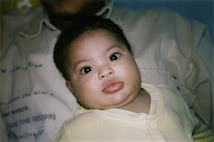By S.S. YOGA (yoga@thestar.com.my)
Source: The Star - Wednesday January 30, 2008
RECENTLY, nine people were reported to have contracted Chikungunya fever in Singapore. And apparently last year there were 10 cases reported. “Chiku what?” you’re probably asking.
Chikungunya is thought to be derived from the Makonde (of south-eastern Tanzania and northern Mozambique) word kungunyala meaning “to dry up or become contorted.”
 |
A girl looking at a model of an aedes mosquito, which transmits the Chikungunya virus. |
The fever is a viral disease transmitted by the bite of infected female mosquitoes. In fact, the mosquito is from the Aedes species, the same that can transmit the dengue and yellow fever virus, among others.
Here in Malaysia it is very rare and there were only three outbreaks reported. The first reported outbreak was in Port Klang in 1999 and it affected 27 people. In April 2006, 37 people in a small village, Bagan Panchor in Perak were diagnosed with it. Then in December that same year in Ipoh, it was confined to a very small area and 30 people were afflicted. Those affected were either workers from India or Malaysian workers who had returned from India (where an outbreak had been reported earlier).
To get you up to speed on the disease and the Chikungunya virus (CHIKV) here is a list of commonly asked questions.
What are the symptoms?
Those infected often have fever, headache, fatigue, nausea, vomiting, muscle pain, rash (but no related haemorrhaging), and severe and sometimes persistent joint pain. The fever lasts a few days to a couple of weeks, but some patients have prolonged fatigue lasting several weeks.
Some patients have reported prolonged joint pain and arthritis. As you may have noticed, many of the symptoms are similar to dengue except for prolonged joint pain.
The incubation period (time from infection to illness) can be two to 12 days but normally it is three to seven days.
Recovery is expected but elderly folks take longer and some may take a year or more. The authoritative health organisations say that no deaths have been conclusively proven due to CHIKV. And good news of sorts – infection (even “silent” ones without illness) is thought to confer life-long immunity.
The incidence of CHIKV infection may be higher than reported because of misdiagnosis (due to the symptoms resembling dengue).
How do you get infected?
A mosquito spreads it after biting a person who is already infected, in the daytime. Monkeys and possibly other animals may also serve as reservoirs.
The mosquito involved is the Aedes aegypti (white spotted body and legs) and there have been cases where the Aedes albopictus (the Asian tiger mosquito) has been the culprit.
How is it treated?
There is no vaccine or specific antiviral treatment for the fever (as in dengue). Treatment is rest, ingesting fluids and medication for mitigating pain and fever. Aspirin should be avoided.
It is recommended that the patient’s movements be restricted so that exposure to mosquitoes is limited in order to avoid further spreading of the virus. Note that there is no direct human-to-human transmission.
How do you prevent it?
Do what is normally done to prevent mosquito bites – use insect repellents, mosquito coils/mats/nets, proper clothing (that covers your body) and so on.
But the best way is to stop the mosquito from breeding. As they breed in clean stagnant water, any place or receptacle which has still water should either be covered or drained (whichever is applicable). Properly dispose used containers (cups, bottles and so on) as they will collect water.
Sourced from the Centers for Disease Control and Prevention and WHO.















































0 KOMEN:
Catat Ulasan
Kongsikan komen anda di sini...